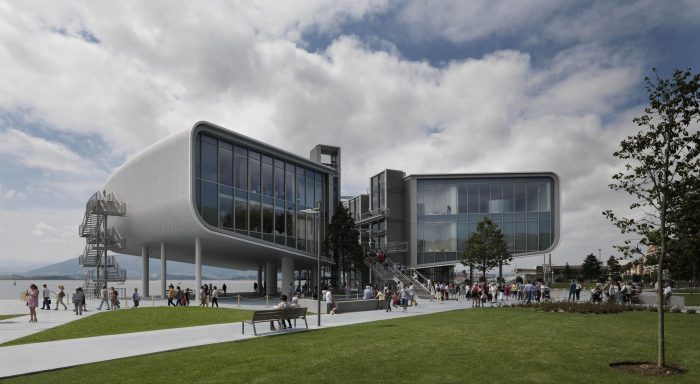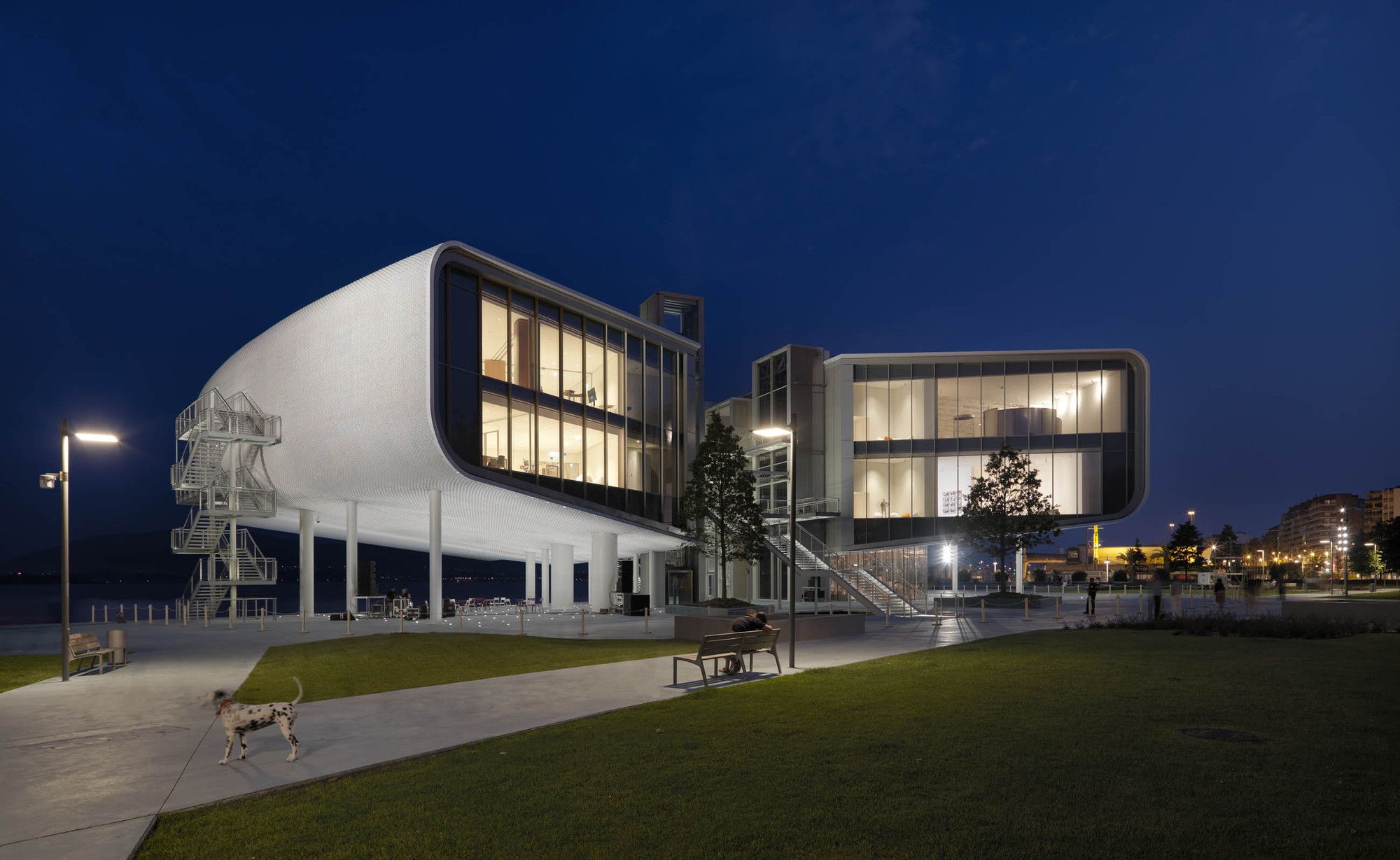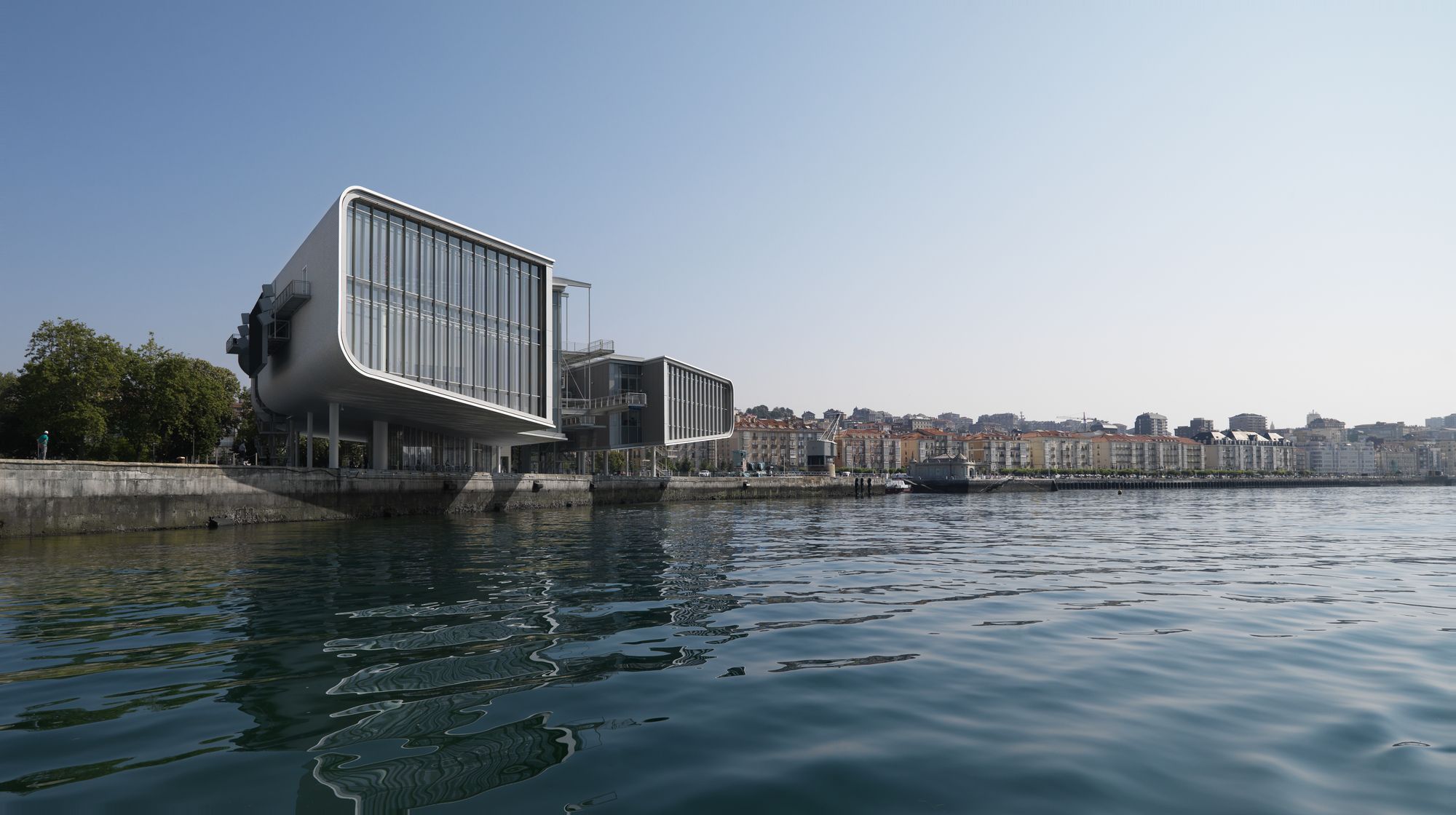Designed by Renzo Piano Building Workshop Architects, The Centro Botín, a space for art, culture and education, projecting into the Bay of Santander, will restore to the city the immense dockland site of the Albareda mole, used until now as a parking lot. This is a strategic area, overlooking the sea, near the old city center and enhanced by the historic Jardines de Pereda. The center was strongly supported by Emilio Botín (1934-2014), president of Banco Santander and financed by the Botín Foundation, one of the most important private foundations in Spain, established in 1964 with the aim of fostering the social, economic and cultural development of Cantabria.
The project restores the ties between the historical part of the city and the sea. The freeway separating the park from the sea has now been rung underground through a tunnel, making it possible to double the area of the Jardines de Pereda, extending them to the seafront and restoring pedestrian access to the sea for Santander’s citizens.
Hemmed in between the park and the sea, and on the axis of the public market, the new Centro Botín is half based on the land and the other half suspended over the water on stilts. This avoids obstructing the view of the sea and the beautiful bay landscape for people strolling in the park, as the Centro Botín is cleverly masked by the foliage of trees. A series of light walkways of steel and glass separate the two rounded volumes of the building and create a new square set above grade and fully public. Stairways and elevators then lead up to the two blocks of the cultural center. From here the “springboard” for the sea projects twenty meters beyond the mole.
The two-lobed form of the Centro Botín is the outcome of a laborious progressive refinement of the design with the use of models. This gave rise to a rounded form that provides better illumination of the ground floor and accompanies the view of visitors and citizens looking out from the park to the sea. The two bodies that make up the building are completely faced with 280,000 small, slightly rounded ceramic tiles, pearl-colored and vibrant, that reflect the sunlight, the sparkle of the water, and the rarefied atmosphere of Cantabria.
The east volume houses an auditorium rising to double height and cantilevered over the sea, and to the north, the educational center: spaces designed with the maximum flexibility to adapt to multiple activities. The auditorium has been conceived as a multifunctional box that can host concerts, readings, lectures, but also festivals and ceremonies, while the rooms of the education center are designed to offer spaces of varying sizes to host future workshops of creative art, music, dance and cookery for both children and adults.
In the west volume, the exhibition galleries unfold on two levels, characterized by a spectacular double view over the sea and the park. The exhibition space on the upper floor is illuminated zenithally by glass roofing consisting of four layers: an outer level composed of small silkscreened glass slats which prevent stray light from entering the gallery space directly; a second layer of double glazing which seals the gallery; a third layer consisting of small aluminium louvers automatically controlled by a system of sensors that can be used to black out the interior and make the lighting flexible; and lastly, under the main beams, a semi-transparent white fabric that creates a uniform space and diffuses the light while revealing the complex structure of the roof.
An amphitheater hewn out of the park runs alongside the Centro Botín, its west façade equipped with a LED screen for screenings and outdoor cinema. On the ground floor, a fully transparent façade encloses a multifunctional space animated by a café, restaurant, commercial space and the information center. Here the ceiling is covered with ceramic and the floor is a continuation of the external blue concrete paving. In this way, the inner and outer space are almost indistinguishable and visitors and citizens can see the sea and landscape of the bay framed by the broad leaves of the building which shelter the tables outside, creating a space for gathering and socializing.
Project Info
Architects: Renzo Piano Building Workshop Architects
Location: Santander, Spain
Collaboration: Luis Vidal + Architects (Madrid)
Area: 6823.0 m2
Year: 2017
Type: Cultural Center
Photographs: Enrico Cano, Stéphane Aboudaram
photography by © Stéphane Aboudaram
photography by © Enrico Cano
photography by © Enrico Cano
photography by © Enrico Cano
photography by © Enrico Cano
photography by © Enrico Cano
photography by © Enrico Cano
photography by © Enrico Cano
photography by © Enrico Cano
photography by © Enrico Cano
photography by © Enrico Cano
photography by © Enrico Cano
photography by © Enrico Cano
photography by © Enrico Cano
photography by © Enrico Cano
photography by © Enrico Cano
Site Plan
Floor Plan Level 1
East Elevation
West Elevation
Transversal Section
Sketch


























